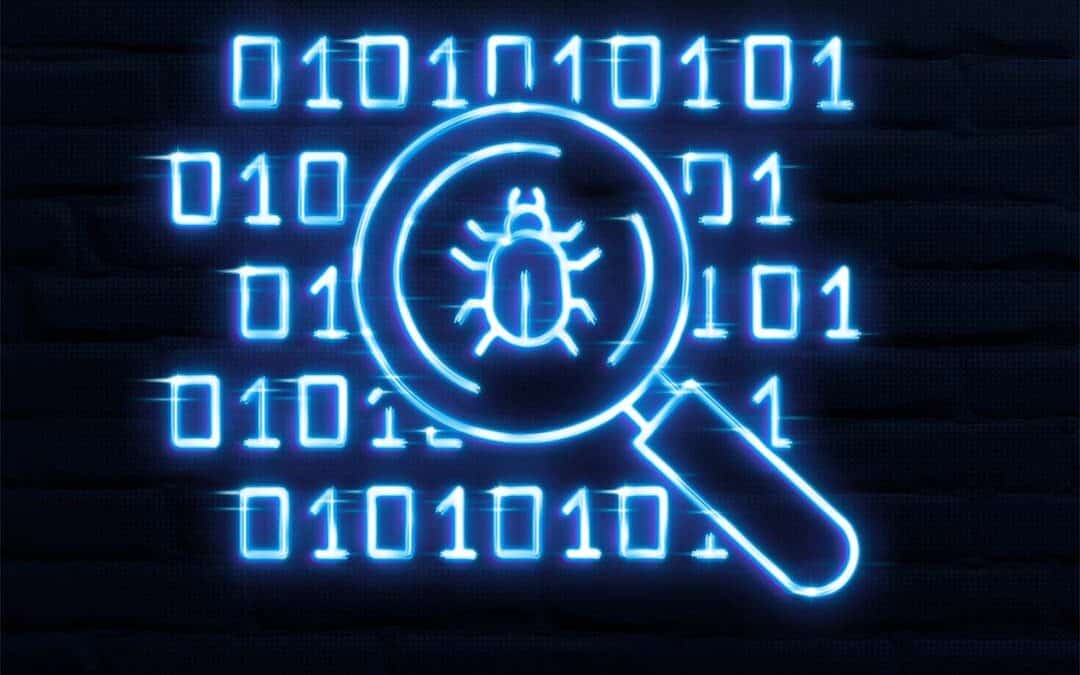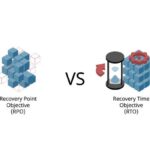All software platforms contend with technical issues, such as insecure codes, bugs, or other vulnerabilities. That’s where patch management comes in. With patch management, organizations can acquire, test, and install multiple patches (code changes) to resolve vulnerabilities in software applications and systems. A crucial aspect of cybersecurity, patch management often goes unnoticed until a significant security breach occurs. Patch management’s comprehensive approach plays a large role in ensuring that your organization’s digital infrastructure remains secure and protected from potential cyber threats so that you can keep your business running smoothly.
What is Patch Management?
Patch management is the process of identifying, acquiring, testing, deploying, and verifying critical software updates. The main goal of patch management is to remove threat vectors that cyber criminals may leverage to access your network’s sensitive data. When software detects vulnerabilities, they are published through the Common Vulnerabilities and Exposures database (CVE)—a free service that catalogs known firmware and software vulnerabilities, making them publicly available. Patch management also identifies and decides the proper order to administer updates since some patches may be a higher priority.
Patch management consists of several key components, each playing a vital role in safeguarding your systems and data:
IT Asset Inventory
The first step in effectively conducting patch management is inventorying the assets within your IT environment. Cybersecurity professionals can run a scan using an asset scanning tool. Specific systems and assets are categorized according to their risk profile. High-risk assets affect the security of sensitive data or the uptime of essential systems.
Vulnerability Assessment
Before applying patches, it’s essential to conduct a thorough vulnerability assessment to identify weaknesses in your system’s software. Again, it involves using specialized tools to scan for vulnerabilities and prioritize them based on severity. The vulnerability scanning tool will correlate your digital assets with the CVE database. Cybersecurity professionals also weigh the possibility of vulnerabilities being exploited against the perceived risk of the targeted asset. One tool that IT experts use to determine this is the Common Vulnerability Scoring System (CVSS). The CVSS rates the severity of security vulnerabilities.
Patch Identification
Once vulnerabilities are identified, the next step is to find patches released by software vendors to address these vulnerabilities. Cybersecurity professionals stay up-to-date with the latest patch releases from various vendors.
Testing
Before deploying patches across the entire network, it’s crucial to test them in a controlled environment to ensure they don’t cause any unforeseen issues or conflicts with existing software configurations. A controlled environment is a test server or sandbox, a digital clone of your IT environment. This testing phase helps mitigate the risk of system downtime or performance degradation.
Deployment
Once patches are tested and deemed safe for deployment, they are rolled out across the network using automated deployment tools or manual procedures. It’s essential to have a systematic approach to deployment to minimize disruptions to business operations. Cybersecurity experts can create automated policies to ensure updates are installed or scheduled according to the risk levels of IT assets. Organizations can make the most of possible downtime during updates by scheduling them around times when demand is low.
Monitor, Report, Repeat
Even after patches are deployed, new vulnerabilities can always spring up, making patch management a critical practice for organizations. The longer vulnerabilities remain unchecked, the better the chance bad actors will exploit them and wreak havoc on your IT infrastructure.
Regular monitoring and reporting allow organizations to track patch status and compliance levels across their infrastructure.
Why is Patch Management Important?
Patch management plays a critical role in maintaining the security and integrity of an organization’s digital assets for several reasons:
Mitigating Security Risks
Unpatched software vulnerabilities are a prime target for cyber attackers looking to exploit system weaknesses. Patch management helps mitigate these risks by promptly addressing known vulnerabilities before they can be exploited.
Compliance Requirements
Many industries and regulatory bodies require organizations to maintain a certain level of security and compliance. Proper patch management practices ensure that organizations meet these requirements and avoid potential penalties or legal consequences.
Protecting Data and Assets
Effective patch management helps safeguard sensitive data and digital assets from unauthorized access, data breaches, and other cyber threats. By keeping software up-to-date with the latest security patches, organizations can reduce the likelihood of successful cyber attacks.
Maintaining System Performance
In addition to addressing security vulnerabilities, patches often include performance improvements and bug fixes that can enhance the overall stability and functionality of software applications and systems. Regular patching helps ensure optimal system performance and reliability.
Challenges of Patch Management
While patch management is essential for maintaining cybersecurity, it comes with its own set of challenges:
Patch Prioritization
With the sheer volume of patches released regularly, it can be challenging for organizations to prioritize which patches to apply first, especially when faced with limited resources and time constraints.
Unknown Threats
While a vulnerability scanning tool can alert your organization to publicly known vulnerabilities, there may be issues not yet reported. For that reason, cybersecurity experts employ other cybersecurity measures. For example, they may tighten access controls, implement multi-factor authentication (MFA), and more to enhance an organization’s security posture.
Compatibility Issues
Patches may sometimes introduce compatibility issues with existing software or configurations, leading to system instability or downtime. Thorough testing is necessary to identify and mitigate these compatibility issues before deploying patches in a production environment. New patches can sometimes affect the performance speed of software and cause version conflicts or other problems. It’s also possible for a patch to introduce a regression bug, which is a previously resolved vulnerability.
Legacy Systems
Legacy systems or outdated software may no longer receive vendor support or patches, leaving them vulnerable to exploitation. Organizations must develop strategies to secure these systems, such as implementing compensating controls or migrating to newer platforms.
Potential Downtime
To run patch management effectively, it may require programs to experience downtime. While it may be inconvenient, it’s a necessary function. Grouping non-critical assets for updates can be a good use of an organization’s maintenance schedule. New patches may impact a software’s process, which means it could need additional updating to get the asset up and running again. Testing in a controlled environment is critical in preventing unintentional downtime.
5 Benefits of Patch Management
Implementing a robust patch management strategy offers several benefits:
Enhanced Security
By promptly addressing software vulnerabilities, patch management strengthens the overall security posture of an organization, reducing the risk of data breaches and cyber-attacks.
Compliance Adherence
Adopting patch management best practices helps organizations meet regulatory compliance requirements and industry standards, demonstrating a commitment to data security and privacy.
Improved System Reliability
Regular patching ensures that software applications and systems remain stable and reliable, minimizing the likelihood of system crashes, errors, or performance degradation.
Reduced Downtime
Proactively applying patches reduces the likelihood of security incidents that could result in system downtime or disruptions to business operations, thereby improving productivity and customer satisfaction.
Cost Savings
Preventing security breaches through effective patch management can save organizations significant financial resources that would otherwise be spent on remediation efforts, legal fees, and reputation damage control.
Patch Management Best Practices
To maximize the effectiveness of patch management, organizations should follow these best practices:
Establish a Patch Management Policy
Develop and implement a formal patch management policy outlining roles, responsibilities, and procedures for identifying, testing, deploying, and monitoring patches across the organization.
Automate Patch Deployment
Utilize automated patch management tools to streamline the patching process and ensure timely deployment of patches across the network, reducing the risk of human error and minimizing downtime.
Prioritize Critical Patches
Prioritize patching based on the severity and exploitability of vulnerabilities, focusing on critical patches that address high-risk security vulnerabilities first.
Test Patches Before Deployment
Conduct thorough testing of patches in a controlled environment to identify and mitigate any potential compatibility issues or adverse effects on system performance before deploying them in a production environment.
Maintain Inventory and Asset Management
Maintain an accurate inventory of hardware and software assets within the organization to track patch status and ensure comprehensive coverage across all systems and devices.
Implement Patch Rollback Procedures
Establish procedures for rolling back patches in case of compatibility issues or unexpected system behavior, allowing for quick restoration of system functionality while addressing the underlying issues.
Stay Informed and Vigilant
Stay informed about emerging threats and security vulnerabilities through vendor advisories, industry publications, and threat intelligence sources, remaining vigilant in monitoring and responding to potential risks.
Regularly Audit and Assess
Conduct regular audits and vulnerability assessments to identify gaps in patch management processes and address any areas for improvement to maintain a robust security posture.
Explore Patch Management with Cynergy Technology!
With over forty-two years of experience, Cynergy Technology is a leading provider of network security solutions. Our Managed Services can provide your organization with consistent operations management and predictable results. A key component of our Managed Services is patch management. Cynergy can monitor your OS patching activities and ensure your digital resources stay current and secure. Once patches or updates are released from your OS vendors, Cynergy applies them promptly and consistently to minimize the impact on your business. Critical security patches are applied as needed, while others can be applied based on your chosen patch schedule. We follow industry best practices and utilize state-of-the-art cybersecurity tools and automation to reduce operational overhead and risks. To learn more about Cynergy’s patch management and other innovative network security solutions, contact our team of experts for a free consultation today!







